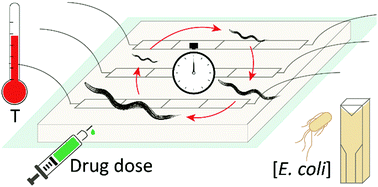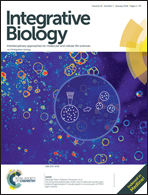A design of experiment approach for efficient multi-parametric drug testing using a Caenorhabditis elegans model†
Abstract
When studying the drug effectiveness towards a target model, one should distinguish the effects of the drug itself and of all the other factors that could influence the screening outcome. This comprehensive knowledge is crucial, especially when model organisms are used to study the drug effect at a systemic level, as a higher number of factors can influence the drug-testing outcome. Covering the entire experimental domain and studying the effect of the simultaneous change in several factors would require numerous experiments, which are costly and time-consuming. Therefore, a design of experiment (DoE) approach in drug-testing is emerging as a robust and efficient method to reduce the use of resources, while maximizing the knowledge of the process. Here, we used a 3-factor-Doehlert DoE to characterize the concentration-dependent effect of the drug doxycycline on the development duration of the nematode Caenorhabditis elegans. To cover the experimental space, 13 experiments were designed and performed, where different doxycycline concentrations were tested, while also varying the temperature and the food amount, which are known to influence the duration of C. elegans development. A microfluidic platform was designed to isolate and culture C. elegans larvae, while testing the doxycycline effect with full control of temperature and feeding over the entire development. Our approach allowed predicting the doxycycline effect on C. elegans development in the complete drug concentration/temperature/feeding experimental space, maximizing the understanding of the effect of this antibiotic on the C. elegans development and paving the way towards a standardized and optimized drug-testing process.



 Please wait while we load your content...
Please wait while we load your content...